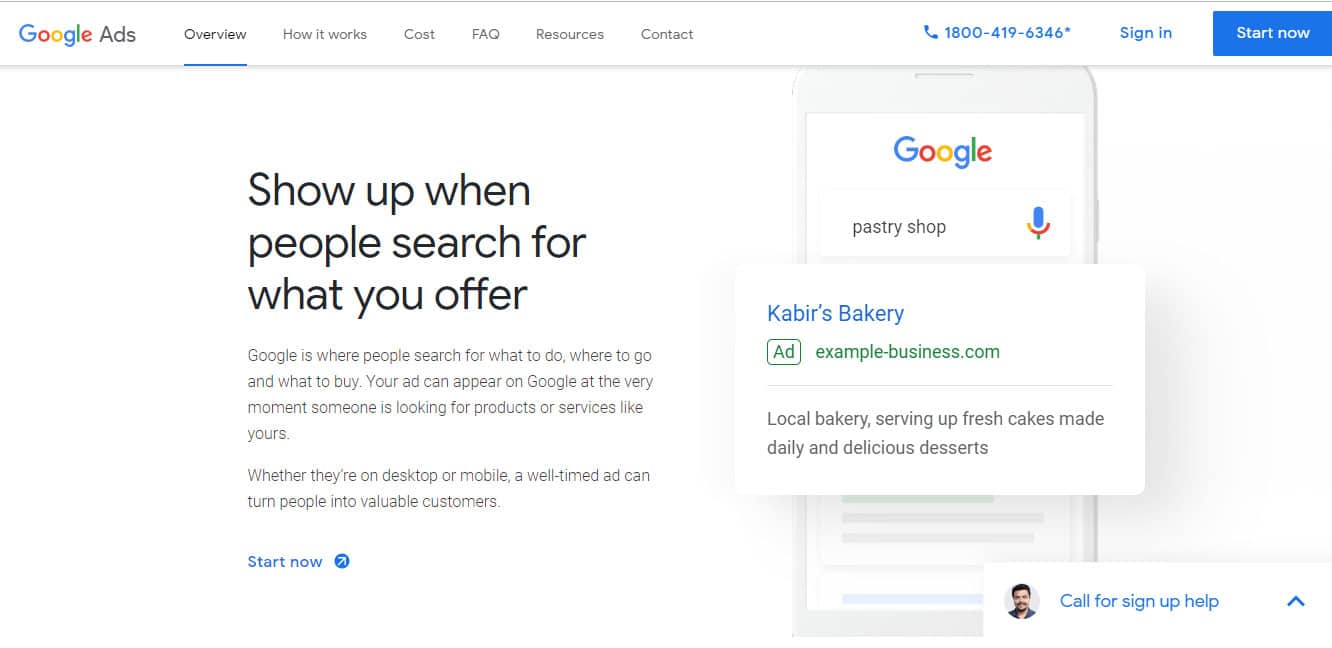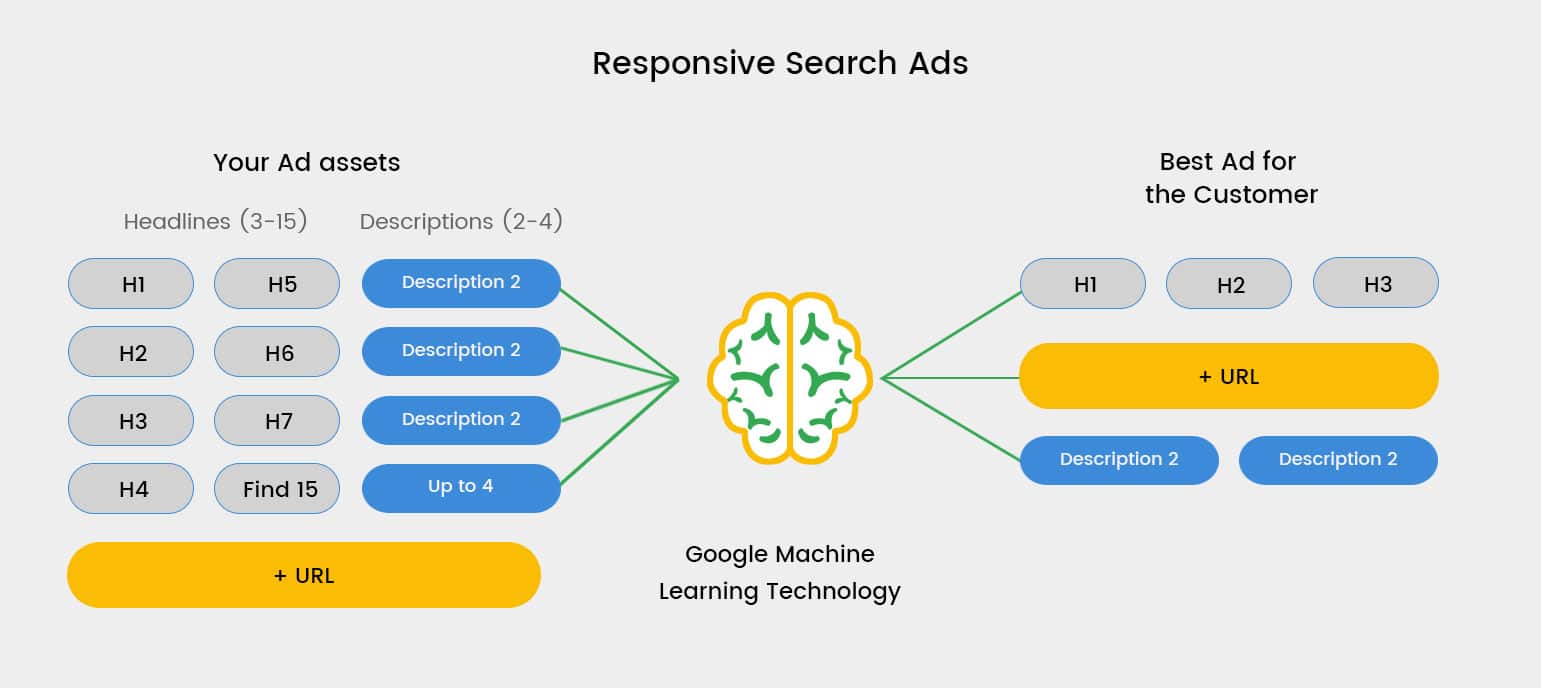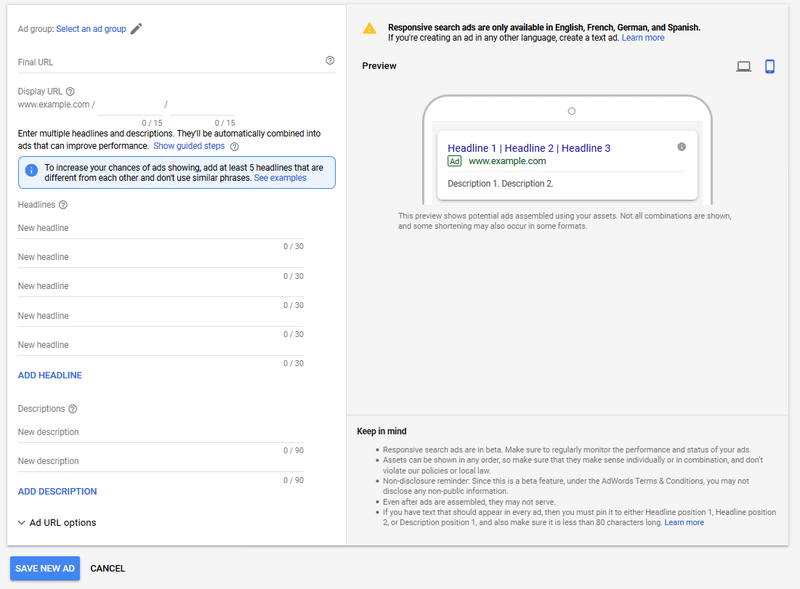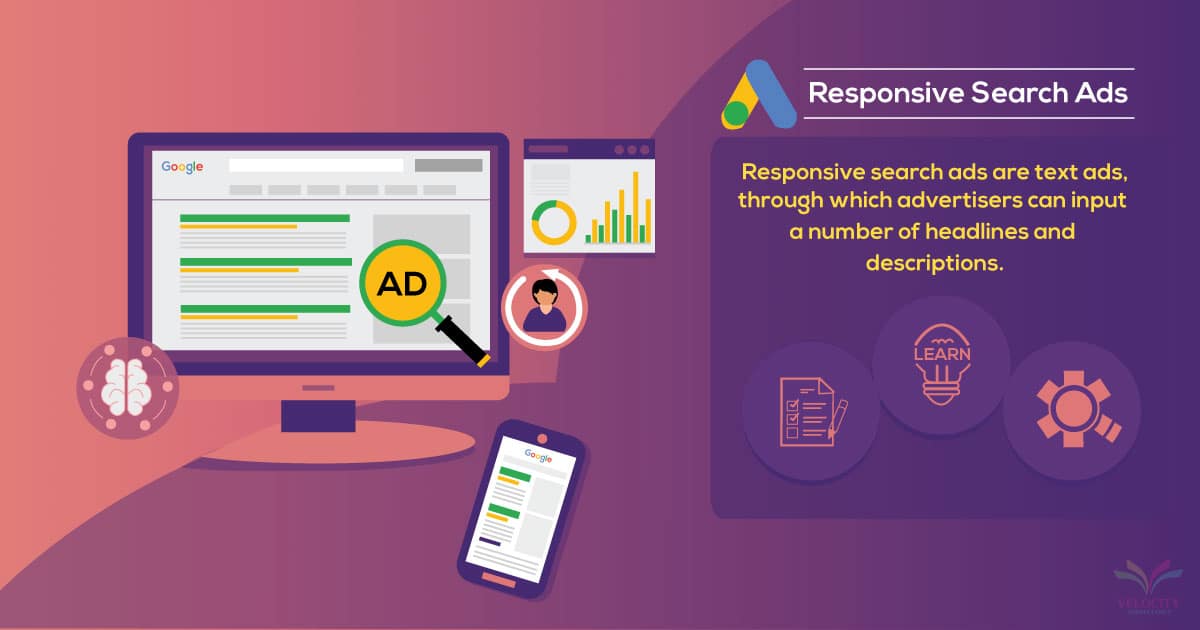Google’s responsive search ads have incorporated a few changes and undergone a complete makeover which will surely reduce the workload of the advertisers. The latest advertisement type facilitates advertisers in creating search ads having more text. It also allows them to test on a number of variations, allowing Google visitors to view the best performing ad combination.

What Are Responsive Search Ads?
Responsive search ads are text ads, through which advertisers can input a number of headlines and descriptions.
These headlines and descriptions are then tested, learnt and optimized by Google’s machine learning, to arrive at the best combination for the requested search query.
This helps in creating ads which are more pertinent and appropriate to the searches made by the customers. Responsive search ads helps in improving an ad campaigns performance by accordingly adapting the ad’s information and descriptions, so that they can match the search terms of potential customers.
The picture below exhibits how the Google machine learning technology chooses from an advertiser’s headlines and descriptions to create the final ad for the right consumer:

Setting Up Google Search Ads:
Below is the screenshot of the setup page in Google Ads. One can add up to 15 headlines and four descriptions by using the editor section. Each selected headline needs to be separated by the “|” symbol, whereas the descriptions should be separated by a period.

It is important to understand that Google will not be able to display all the three headlines because the number of headlines or content displayed is determined by the size and the type of device used by the searcher. A smaller screen of a smartphone may be able to display only two headlines. Responsive ads will always display two headlines and one description, no matter what is the size of the device.
Few features of Google Responsive Ads:
- An advertiser can write up to 15 headlines and 4 descriptions
- These written descriptions and headlines can develop around 43,680 versions of the same advertisement
- Google’s machine learning conducts free automatic testing of the various ad variations
- The searcher’s browsing history, device history helps in determining the automatic selection of the ad
Tips for creating effective Google responsive Ads:
- Do not use monotonous and uninteresting variations of the same headline. Google will not display your Ad if the headlines and descriptions used by you are too similar.
- You should input a number of unique headlines and descriptions which can be combined to form unique content. Avoid using repetitive language or the same call to actions.
- Offer at least 8-10 headlines. Higher the number of headlines you provide, higher are the chances to get more options to input your messages into relevant ads.
- Ensure that an important keyword is used in a minimum of 2 of your headlines. Using Dynamic Keyword Insertion for placing Keywords into Responsive Search Ads will be very useful.
- Ensure that a minimum of 3 headlines should not include the keywords. This will help in keeping the ads from becoming exceedingly repetitive. This will help in highlighting and delivering more value to the researchers.
- Ensure that the headlines and descriptions provided are of different lengths. However do not try to increase the character count each time in every element.
- Add a minimum of 2 unique descriptions, because Responsive search ads may display up to two descriptions at a single time on the screen of the researcher.
- Try highlighting supplementary products or benefits and features of the services provided, or highlight the shipping and returns policy of the company.


